The Academy Award-winning film Parasite has further elevated Korea’s status as a must-see. Here’s several top sites to add to the itinerary.
1. Donggung Palace and Wolji Pond
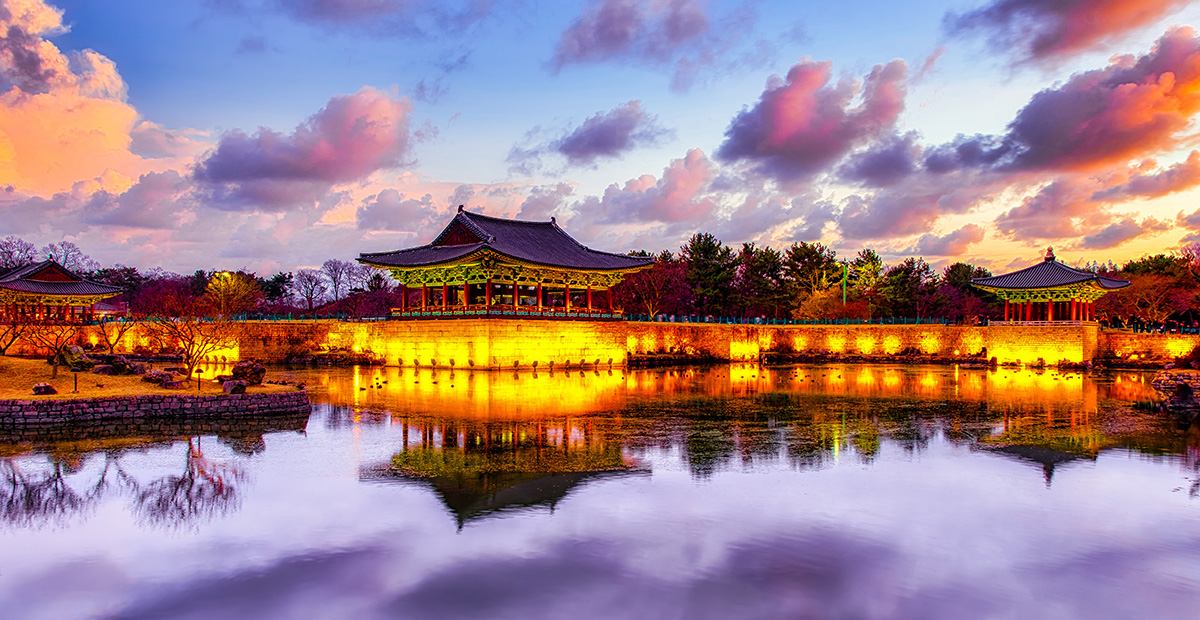
Located in Gyeongju National Park, the Donggung Palace and Wolji Pond is considered a national treasure by Koreans. The pond and decorated pagodas were once part of a palace complex in the capital of the Kingdom of Silla under the rule of King Munmu, who is celebrated for briefly unifying the Korean kingdoms during the first century. Despite Korea’s conflicts with the Chinese, Silla was influenced by its neighbor’s religion, Taoism and Buddhism, and the T’ang culture is seen in the construction of the palace’s pagodas and the layout of the pond. Inspired by classical T’ang architecture, it’s designed to enable individuals to attain inner peace through meditation. The ancient and original name of the pond, Wolji, translates to “water that reflects the moon.”
2. Cheongsando Island
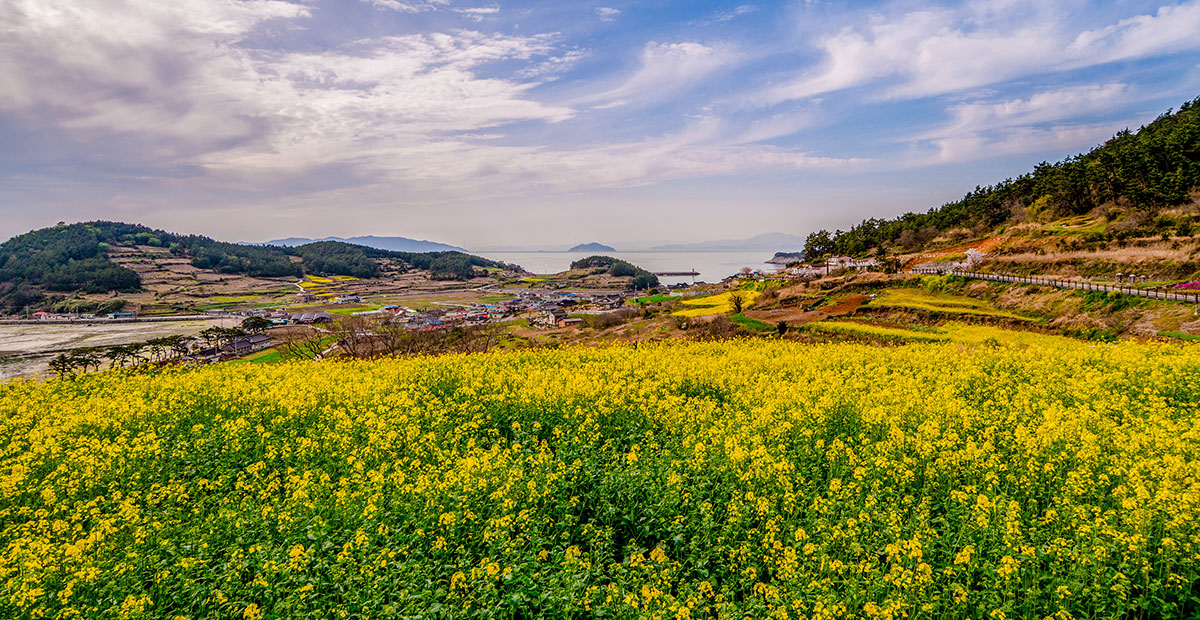
Cheongsando Island or “Blue Mountain Island” is located off the southern coast of South Korea. The name Cheongsan carries the meaning that all of the surroundings – the mountains, ocean and sky – are blue. Along with its beautiful picturesque view of the sea, steep rocky shoreline cliffs, terraced rice paddies, and stone walls, Cheongsando is also known as a “slow city.” The first of its kind in Asia, a slow city promotes slow city life, where nature and tradition come together. The island also hosts the annual Cheongsando Slow Walking Festival, which allows course walkers to enjoy the inspiring scenery.
3. Samgwangsa Temple, Busan
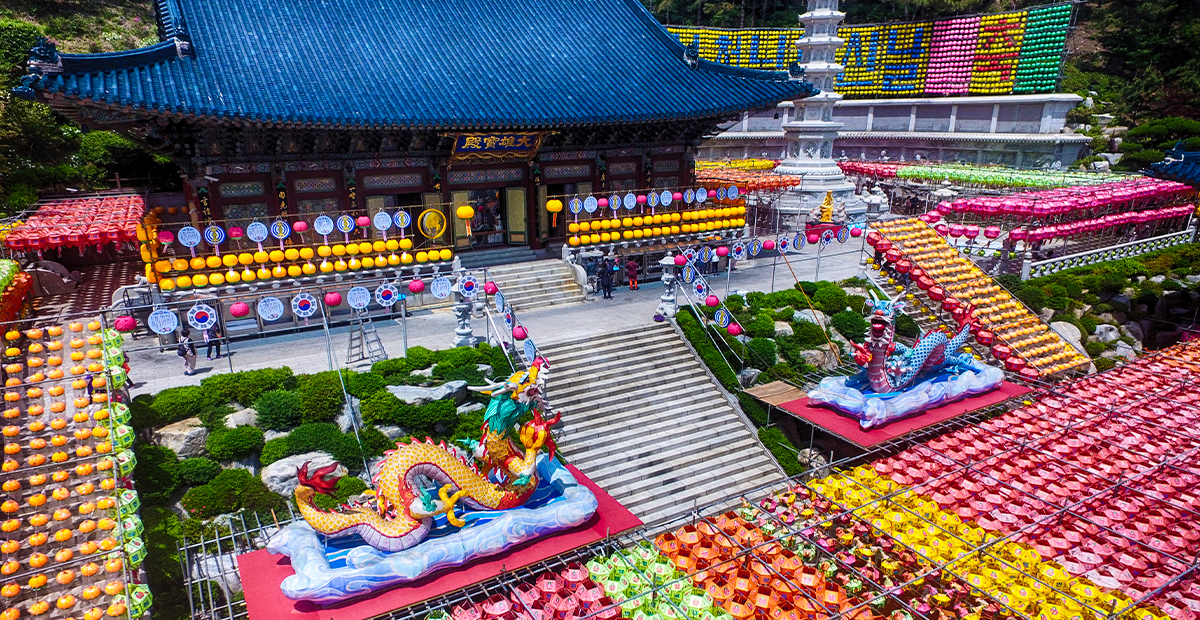
Occupying 120,000 square-meters on the slopes of Mt. Baekyang in central Busan, the Samgwangsa Temple was built in 1982 and is dedicated to Gwanseeum-bosal, the Bodhisattva of Compassion. It’s home to largest stone pagoda in all of Asia, the Daebo Tower. The nine-tiered, white structure is topped with a gold-plated lotus flower, 53 Buddhas, and zodiac animals, and it enshrines sari, small crystals found among remains of high monks. The Bell and Drum Tower is also a must see. A 3.5-meter bronze bell and a huge drum are housed in the tower along with a large Buddha. The temple is also home to the famous Samgwangsa Temple Lantern Festival, which celebrates the Buddha’s birthday with over 40,000 colored lanterns each May.
4. Jinhae (the famous Cherry Blossoms)
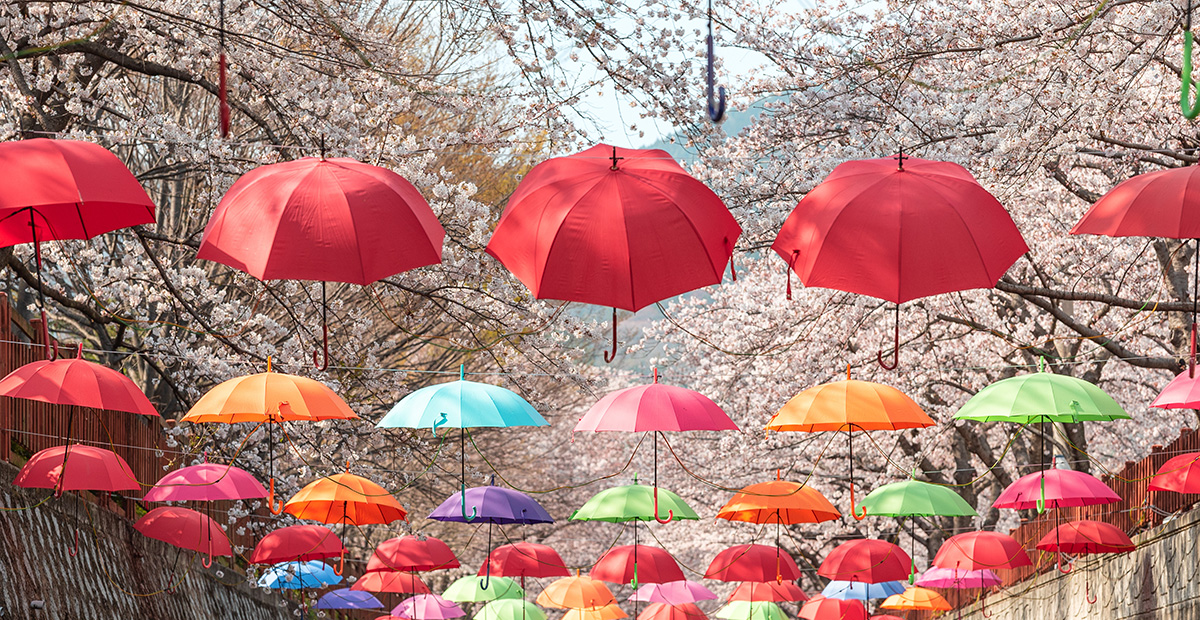
Originally developed as a Japanese naval base during the Japanese occupation, Jinhae is now home to many Korean Naval families, Korean Navy shipyards, and base facilities, as well as the South Korean Naval Academy. The urban area is also home to Korea’s most brilliant cherry blossoms. Each spring (usually beginning of April), over two million people journey to Jinhae to experience the ten-day Cherry Blossom Festival, where visitors can take in the blooming cherry blossoms along with street lightings and military parades.
5. Jirisan National Park
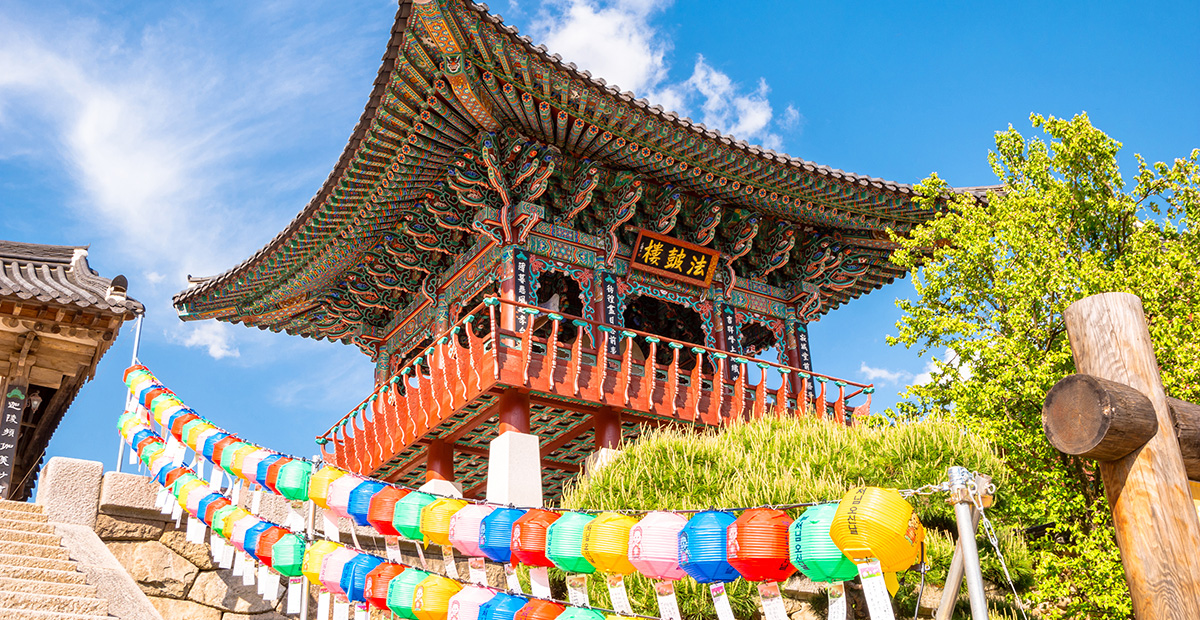
South Korea’s first national park Jirisan is home to numerous historical sites and temples, 12 peaks, including the country’s second-highest mountain, and is some of Korea’s best hiking. One of the best trails to experience begins at Jikjeon Villages and passes the park’s largest temple Yeongoksa. It’s most enjoyable in the fall months when the leaves show off their autumn colors. Plus, the trail ends in Piagol, where the Maple Tree Autumn Foliage Festival is held each October.
